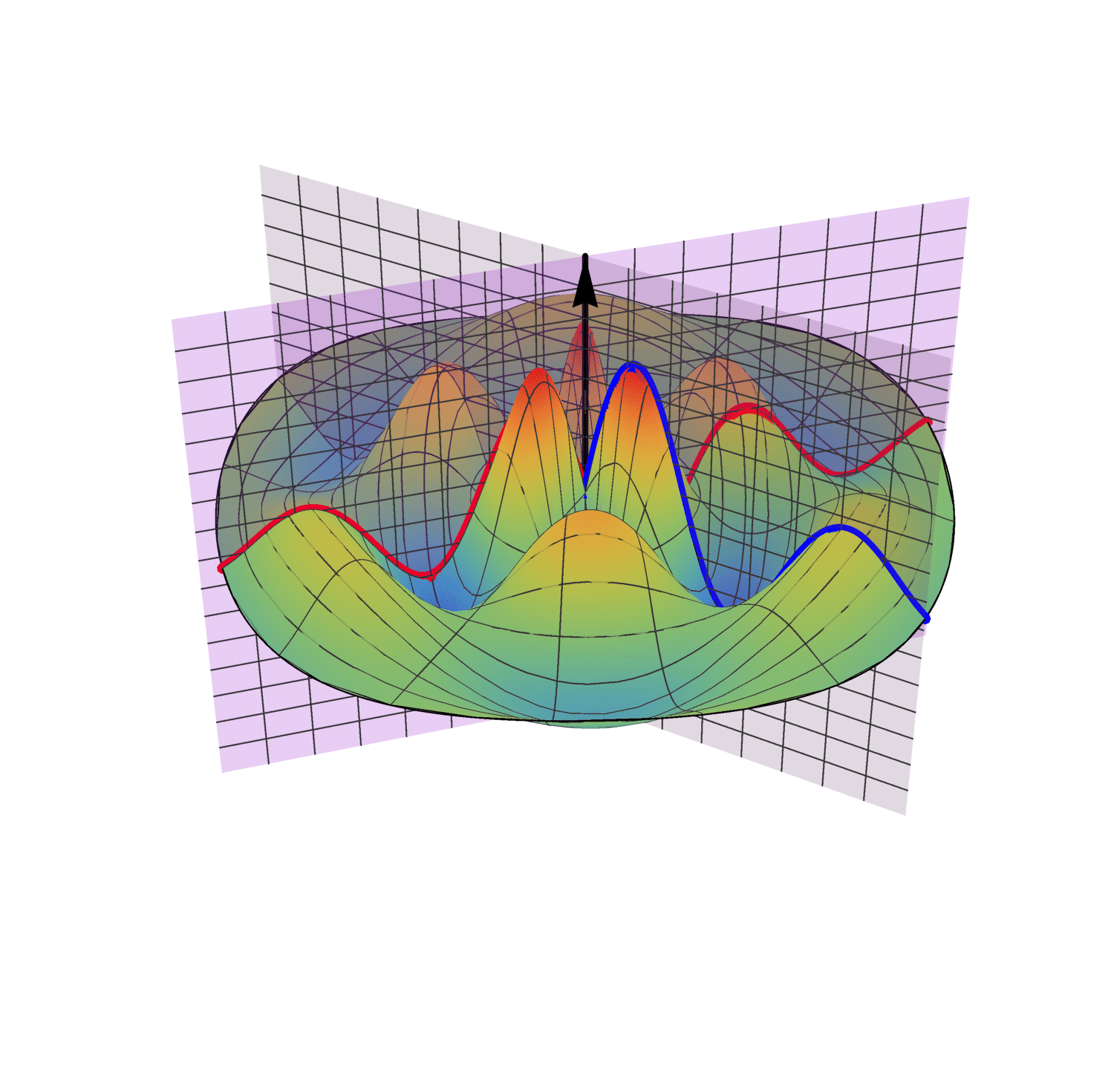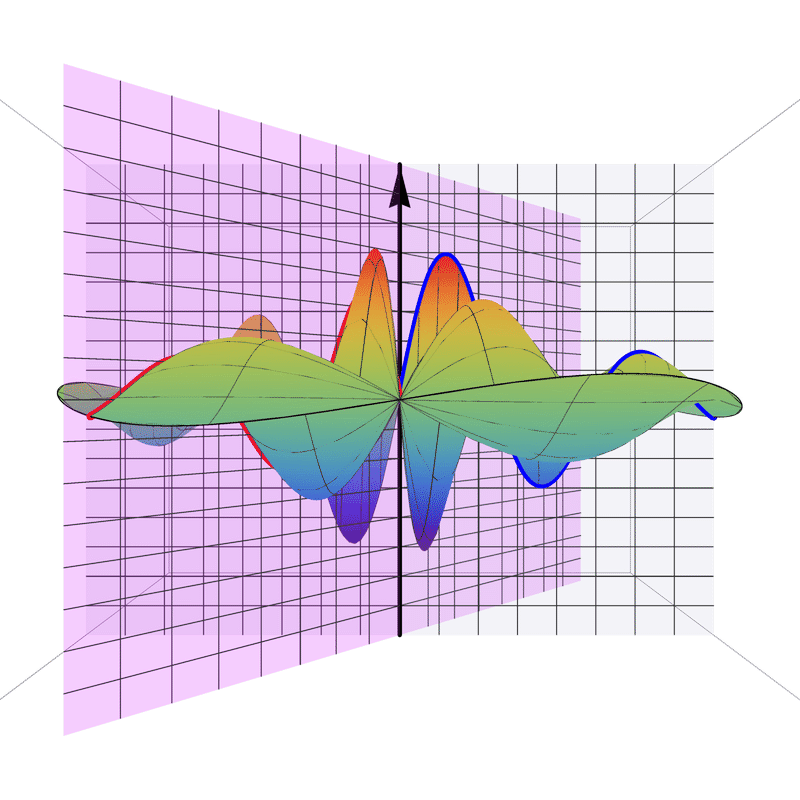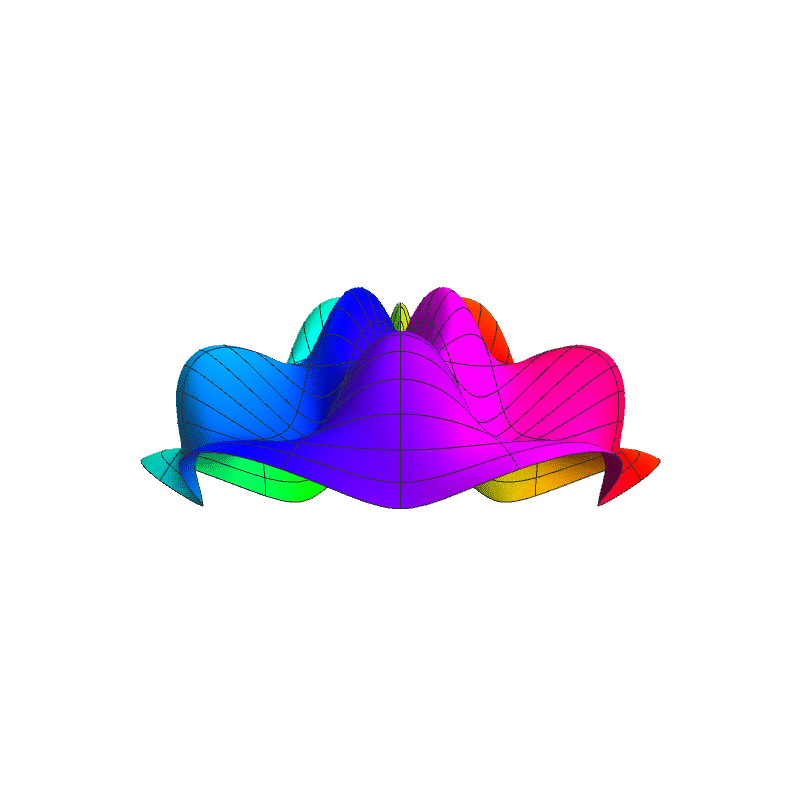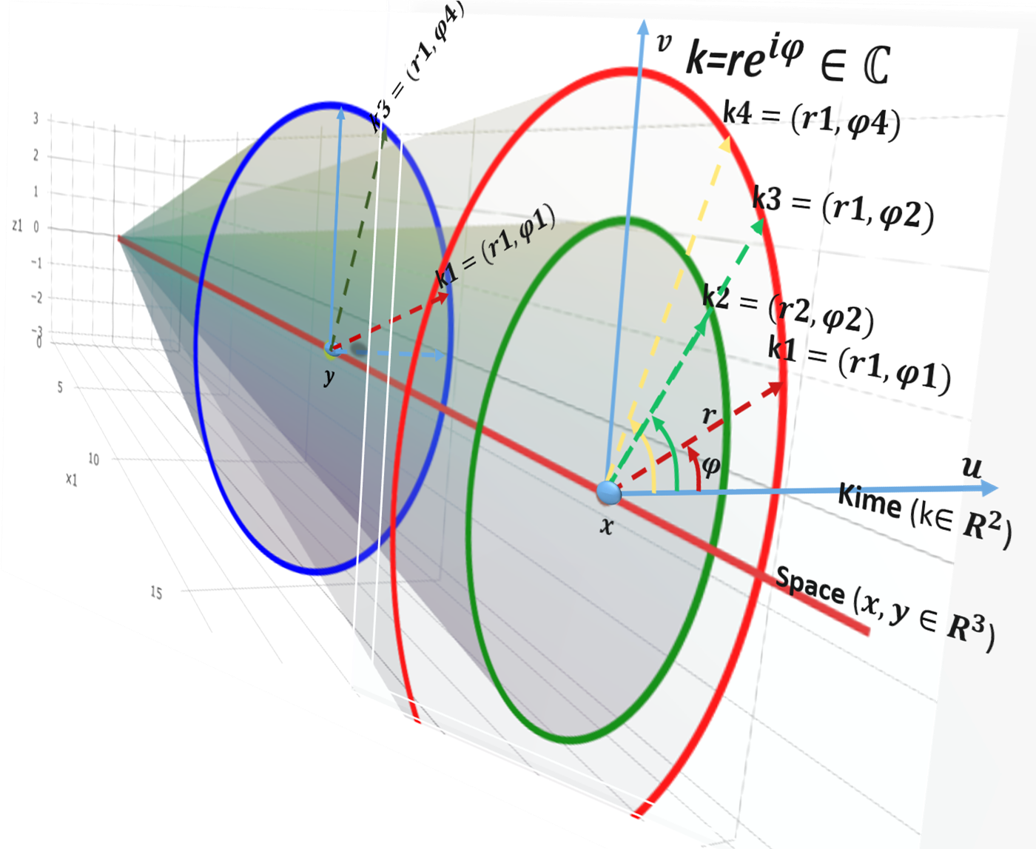
Overview
The SOCR group at the University of Michigan is developing a novel theoretical foundation to extend the notion of time to the complex plane. This approach lifts the concept of time from a positive real number representing event ordering to a 2D complex-time (kime) comprising a pair of coordinates - time (t) and phase (φ). This approach enables powerful data-driven analytical strategies for large longitudinal data. The 5D spacekime analytics utilize information measures, entropy, KL divergence, PDEs, Dirac’s bra-ket operators, and the Fourier transform. This data science fundamentals research project explores time-complexity and inferential uncertainty in modeling, analyzing, and interpreting large, heterogeneous, multi-source, multi-scale, incomplete, incongruent, and longitudinal data.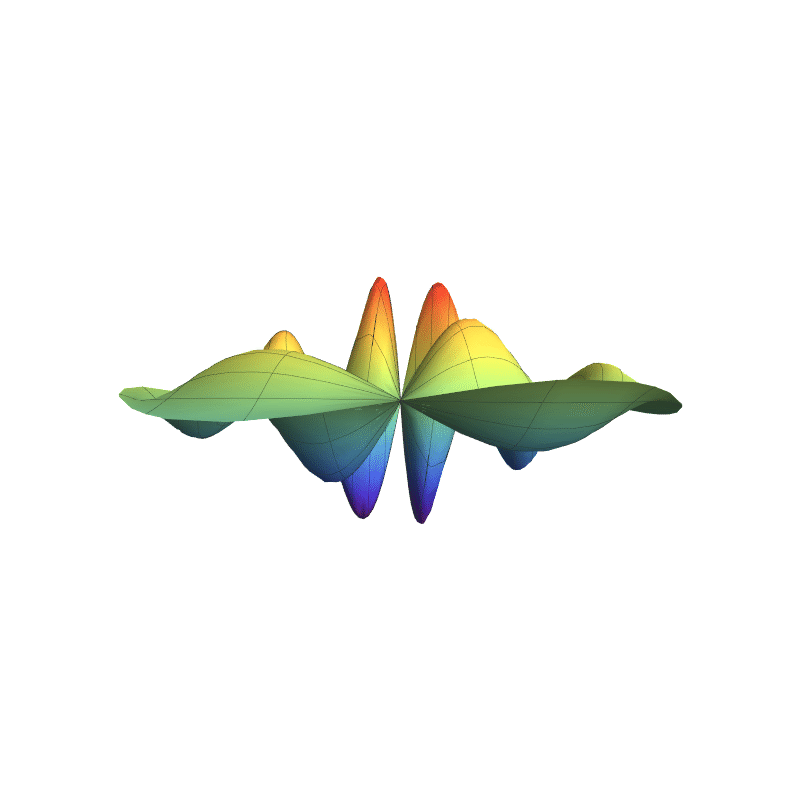
In 4D spacetime, classical time-series are represented as real-valued functions defined over the positive real time domain. In the 5D spacekime manifold, time-series (curves) extend to kime-series, which are represented geometrically as surfaces. This animation illustrates the surface corresponding to one such kime-series at a fixed spatial location. At any given kime, i.e., for a pair of arguments kime-magnitude (t) and the kime-phase (φ), the height of the kime-surface represents the intensity of the kime-series and is coded in rainbow color. Notice the 2D parametric kime grid superimposed on the surface of the kime-series. There are kime-phase aggregating operators that can be used to transform standard time-series curves to spacekime kime-surfaces. These kimesurfaces that can be modeled, interpreted, analyzed, and predicted using advanced spacekime analytics.
The Spacekime Community Site has a blog tracking some of the spacekime activities and includes generative AI textual and imaging interpretations of complex time and spacekime.
Kime-series (kimesurfaces)
In many disciplines like music, economics, biomedicine, and health sciences, the flow of data and information is time-dependent. This includes the longitudinal progression of events, frequencies, motion, states, etc. In the 5D spacekime manifold, these time-courses, temporal events, or time-series, are actually complex-time surfaces (kimesurfaces) whose realizations in the lower-dimensional 4D spacetime are observed simply as curves over time.For a more concrete example, imagine a symphony performance in a concert hall. At roughly the same time and the same spatial location (ignore periphery seats and bleacher rows for now), all attendees (observers) receive the same longitudinal input (e.g., temporal audio-visual-tactile stimuli). However, at the end of the performance, all attendees leave the concert hall with relatively different experiences, distinct impressions, and unique opinions about the adventure. At each instance of time, all observers share the same spacetime location, but their differential experiences correspond to random sampling through the kime-phase space (Φ), which explains their uniquely individual encounters. After the performance concludes, communication and stratification of the individual experiences lead to review(s) reflecting the “overall consensus” capturing the joint experience, performance quality, impact, and value of the encounter. In other words, kime-averaging of all impressions gives us a yardstick measure of overall performance quality that can be used to compare, contrast, or calibrate other similar past or future performances.
About Spacekime
Complex Time (kime)
Over 100 years ago, the ideas of many polymaths materialized into a unifying notion of an integrated 4D Minkowski space-time. Kaluza and Klein were the first to ask what may be the implications of adding a special tiny (non-traversable) fifth dimension. Later the work of Wesson, Bars, and the 5D space-time-matter consortium generalized this idea. The SOCR team is now extending the interpretation of the universe as a 5D space-kime manifold where time is no longer simply a positive unidirectional concept, but a complete field isomorphic to the complex numbers. This leads to interesting extensions of classical concepts like time, events, and spacetime metric, to their more general counterparts, kime, kevents, and spacekime metric tensor. This generalization resolves some of the problems of time and enables the formulation of time-dependent properties as process characteristics derived using the 2D kime. Additionally, the quantum mechanical notions of particle and wavefunction are extended to datasets and data science analytics.
Spacekime details
The time-complexity and inferential-uncertainty textbook provides detailed formulation of the spacekime manifold and its applications to data science and longitudinal health analytics.
Spacekime data analytics
The lifting of the 4D spacetime into the 5D spacekime manifold has profound implications on
the collection, modeling, interpretation, and analytics of all longitudinal information.
Two specific implications include:
- Reduction of the need for large-samples to estimate specific population characteristics; and
- Improvement of the subsequent data analytics performed on spacekime-transformed data.
Spacekime Project Goals
This project aims to answer some deep and fundamental questions like:
- How to translate centuries of fundamental mathematical and physics ideas into data science?
- Can large-sample theory be replaced by small-samples with some prior knowledge?
- Is the universe really four-dimensional?
- What if there is no arrow of time and we can traverse spacetime in any direction?
- Would lifting the spacetime dimension lead to differences in the interpretation of information and improvement of the resulting data-driven inference, prediction, or clustering?
